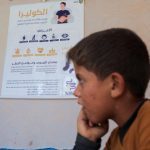Pathological anxiety in children can be a challenge for parents and educators, as it is sometimes difficult to understand and deal with the signs effectively. In this article, we’ll look at some of the signs that there may be a pathological anxiety in children and how to deal with this challenge.
Signs of pathological anxiety in children:
1. Changes in behaviour:
Anxiety in children may manifest through changes in their behaviour, such as social withdrawal or hysterical behaviours.
2. Difficulty sleeping:
Anxiety can be the cause of sleep difficulties, such as frequent wakefulness or nightmares.
3. Poor focus and academic performance:
Anxiety can affect a child’s ability to focus in school and academic performance.
4. Unexplained physical complaints:
Children may express anxiety through physical complaints such as headaches or stomach pain without obvious medical reasons.
5. Changes in dietary pattern:
Anxiety can lead to loss of appetite or weight gain, showing its effect on a child’s nutritional pattern.
How to deal with morbid anxiety in children:
1. Speaking opens the debate:
It is important to open channels of communication with the child and encourage him to talk about his feelings and fears.
2. Providing emotional support:
The child needs to feel supported and safe, attention and understanding may be key to relieving anxiety.
3. Interact with the problem effectively:
When the source of concern is recognised, effective steps can be taken to help the child deal with it.
4. Guidance for professional assistance if necessary:
If anxiety persists significantly, it is best to see a paediatrician or mental health professional to evaluate and direct appropriate treatment.
Finally:
In the face of children’s anxiety, early detection and effective management are crucial. Providing the necessary support and guiding children towards expressing their feelings, we can provide an environment that helps to better overcome difficulties and enhance their mental health.







